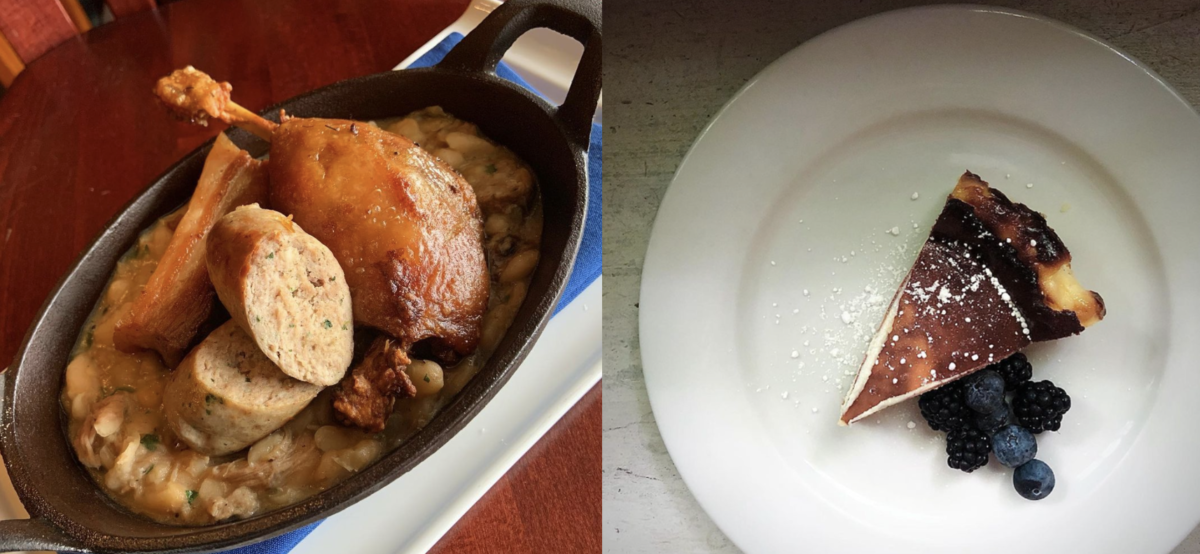Some of Charleston’s French restaurants may be new, but they don’t fall short on flavor and tradition, and they harken back to the city’s long-standing ties with European culinary influences that were often brought directly to the Palmetto City by French immigrants themselves. Downtown, there’s Gaulart and Maliclet, Rue de Jean, Maison, and Chez Nous. Off the peninsula, Mount Pleasant offers Bistro Toulouse, Ville Sainte Bistro, and Saveurs du Monde, while diners on the sea islands have the famous Fat Hen and Baguette Magic. In this restaurant series installment, we’ll also look at early French traditions in Charleston and some of the pioneering and still lamented French Restaurants of the twentieth century.
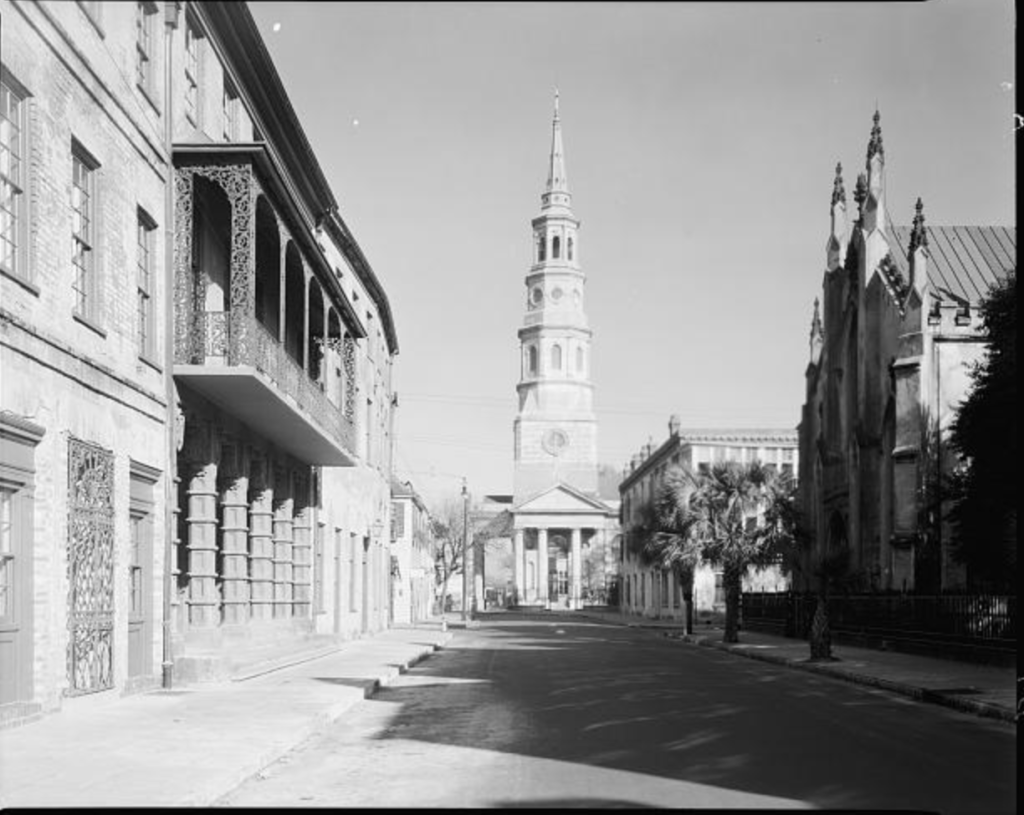
Charleston had a small but culturally and economically important French minority from the late seventeenth century. Our French Quarter is the oldest in the South, and the name “was coined in honor of the French Huguenot protestants who fled Catholic France in the 1680s and emigrated to the new English colony of Carolina. The French Huguenot Church in the midst of the neighborhood (founded in 1687; current Gothic Revival building constructed in 1845) is the only church of its denomination still operating in the United States, and once a year the congregation still holds a service in French.”
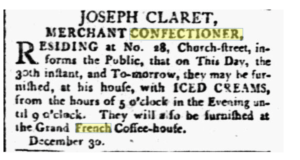
The French Huguenots imported wines and culinary traditions from their mother country, like the almond Huguenot torte and coconut cakes. Food historian Anne Byrn states that, “coconut cakes have long been associated with the South, and they were baked in Charleston and New Orleans in the early 1800s. Coconut was first used in candy making by French and Dutch confectioners. Old Charleston records show that a pastry chef named Catherine Joor had 400 pounds of coconut in her possession in 1773.”
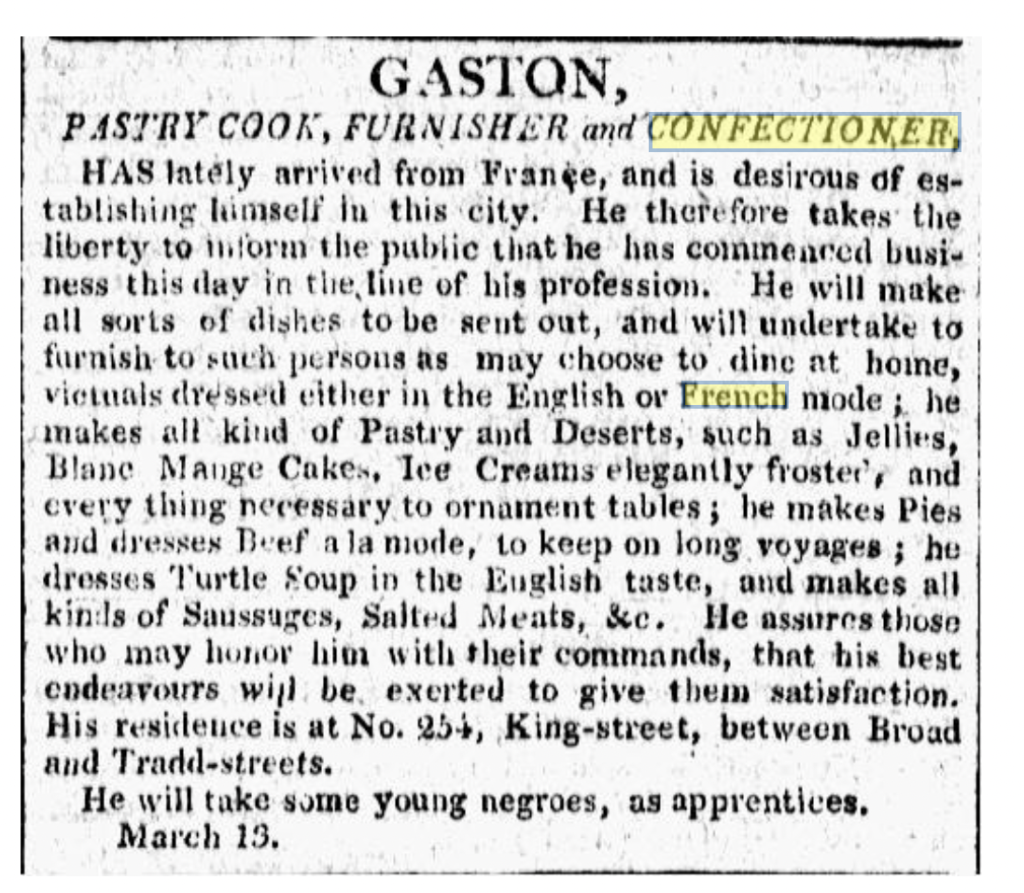
After the French Revolution, French Catholics came to Federal era Charleston (it was by then legal to be Catholic in South Carolina), and a much larger wave came from St. Domingue (now Haiti) after the Haitian Revolution caused white planters, some with slaves in tow, and free gens de couleur to flee as refugees. They were accepted in Charleston; historian Nic Butler states, “Like the established planters in the Lowcountry of South Carolina, their privileged lifestyle had been built on the backs of enslaved people of African descent, but now they had lost everything and were obliged to start anew. Many used their talents to forge new careers as teachers, musicians, dancing masters, fencing instructors, and chefs.” St. Dominguan residents cooked in restaurants and private homes and opened confectionary shops selling French pastries and candies. Over time, they assimilated and intermarried with Charleston’s gentry and much of the French culinary tradition receded into memory.
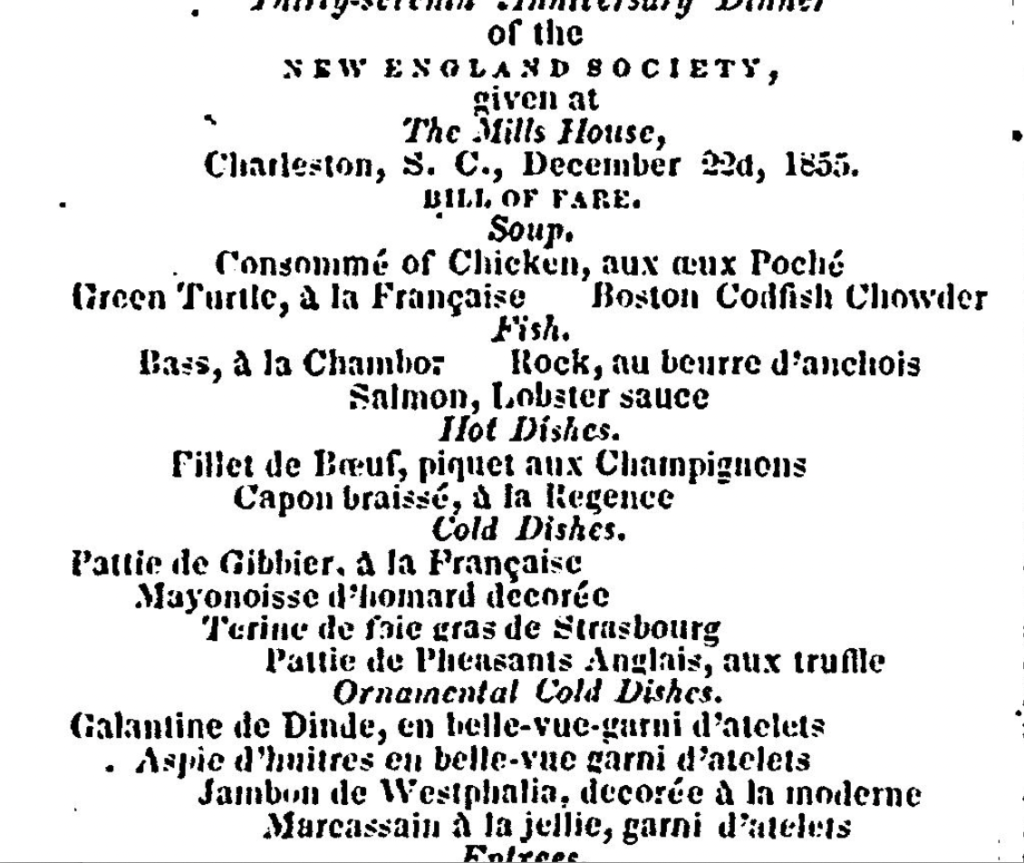
The city saw its first wave of modern French restaurants with the beginning of Spoleto Festival USA in 1976, which attracted and international crowd and sparked a boom of high-end establishments like the Colony House on Prioleau Street with the Wine Cellar within, a dining room dedicated to French wines and cuisine. Before that, much of East Bay and Meeting Street’s store fronts were dilapidated and vacant, and Susannah Smith Miles explains that, “few could envision its future restoration and the restaurant row it would become.” Million on Unity Ally and Marianne’s on Meeting Street were pure French, while other upper crust restaurants like SNOB began offering some French-inspired plates. Marianne opened in 1977 and quickly moved to a larger facility, in the historic cast iron store front at the corner of Meeting and Hasell Streets. Chef Oscar George was renowned for his French onion soup and steak au poivre vert, and but he also offered a late-night breakfast for Spoleto revelers. He remembers, “when there was only a smattering of good restaurants in the city and the key people, such as Marianne’s owner Serge Claire, who paved the way for Charleston’s restaurant scene to blossom.”
Gaulart and Maliclet, also known as Fast and French, is Charleston’s oldest operating French restaurant, opening its doors in a historic house on Broad Street in 1984. Current owners Lawrence Mitchell and Jennifer Bremer have worked there since the 1990s, working their way up to chefs before purchasing the restaurant from its French creators on their retirement in 2011. G & M is popular with the local real estate and legal crowd for lunch (it’s located next to the courthouse) and for dinner with friends or for dates; the restaurant is small, cozy, and has community tables conducive to chatting. Bremer notes, “we have a very limited kitchen, so we’re limited to hot sandwiches, soups, and big-pot specials. When you look at that, we’re more like how you would eat at home.” They offer cheese platters, baguettes and croque monsieur’s, soup du jour, and desserts paired with a crisp house white.
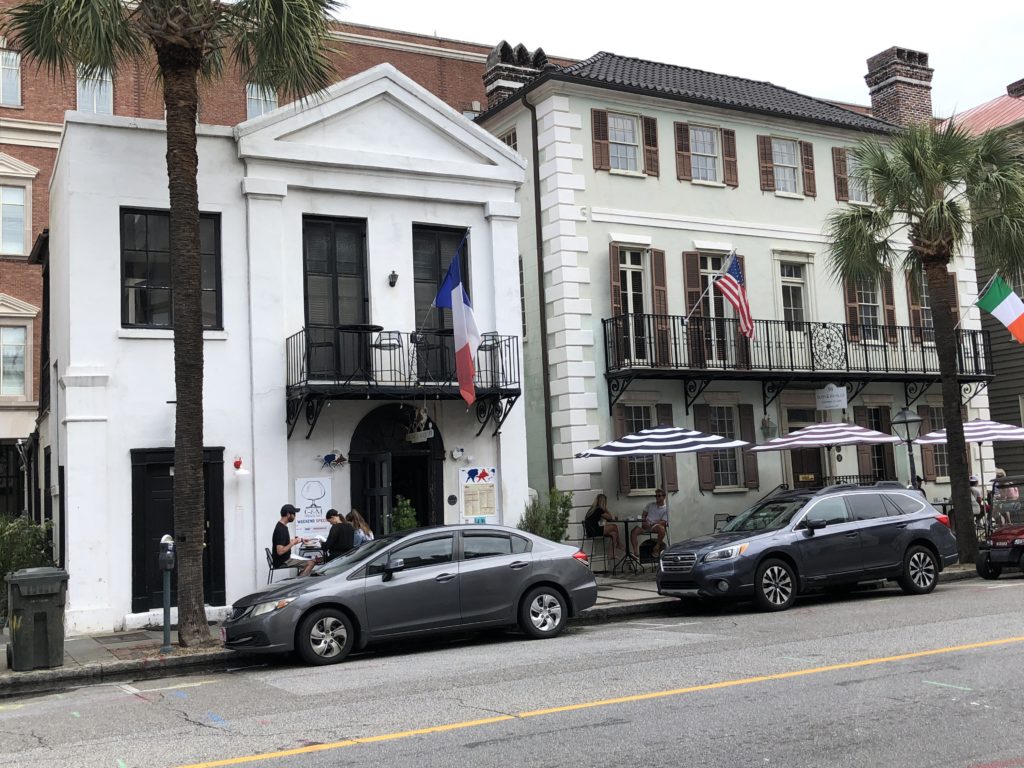
Rue de Jean (on John Street) has been a favorite since its opening in 2001 as one of the pioneering restaurants of upper King Street. Their website explains that Rue, “emanates the characteristics of a late 1800’s brasserie, which offered Parisians hearty robust cuisine, handcrafted beers and affordable wines, in a vibrant while of jubilant socializing.” This inspiration went over perfectly in Charleston, and they’re voted Best French Restaurant year after year by the Charleston City Paper. They “are grateful to be a part of the Charleston Restaurant Community as well as the historic downtown community that we’re grateful to take part in.”

Their extensive menu offers classic French fare: charcuterie, cheeses, beef tartare, six preparations of mussels (the aioli and the vegetable cream are amazing); coq au vin, duck breast, grilled salmon, scallops, steak et frites, a delicious shrimp Provençal (penne pasta, shrimp, garlic, pernod, tomato, and red chili flakes.); a full wine and spirits list; and wonderful desserts including crème brulee, pots de crème, tortes, poached pears.

The smallest and most intimate French restaurant downtown is Chez Nous, in a historic Charleston single house tucked on Payne Court on the West Side. The cuisine and extensive wine list draw from southern France, northern Italy, and northern Spain. Chef Jill Mathias creates a custom menu written out by hand for each day’s lunch and dinner, with two choices for each of the three courses, such as: salmon tartare or salad; grilled pork skirt steak or fish with braised lettuce; and chocolate meringue or cherry tart. Bon Appetit gave it rave reviews: “Tucked down a side alley in a narrow antebellum home, it’s worth a visit for the ambience alone, from the crumbling brick hearth and salvaged-wood bar downstairs to the intimate second floor, with exposed rafters, a cathedral ceiling, and, at lunchtime, light streaming in across the bare wood tables and spindly chairs. That the food lives up to the decor makes a meal here feel like you’ve discovered a secret.”
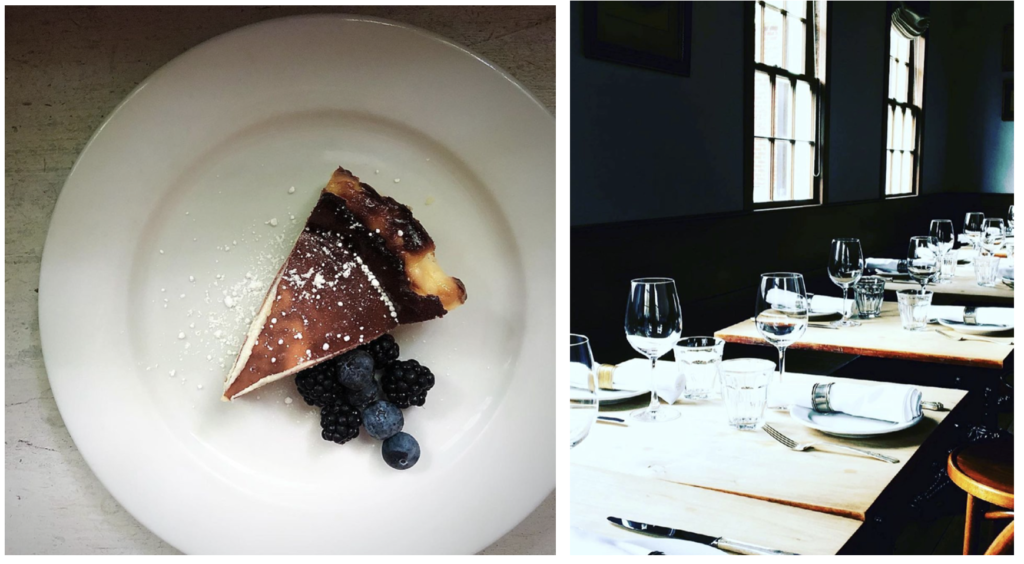
Maison on upper King Street is a newcomer that’s already popular with the younger crowd for lunch and dinner. Chef Vandy Vanderwarker came from the Ordinary to create a new French menu infused with southern traditions. The offerings are balanced between vegetables and light fare like salmon rillette, heartier steaks and frites, and classics like escargots. Be sure to leave room for a madeleine or chocolate mousse for dessert. The unassuming exterior gives way to a well-lit dining space with clean lines and woven wicker chairs reminiscent of a Paris café.

In Mount Pleasant, Bistro Toulouse off Highway 17 is a popular restaurant which owners Candice Mahala and Matthew Schulz’ describe as “created in the spirit of a classic Parisian bistro offering modern interpretations of regional French dishes, fine wines and cocktails. The atmosphere is comfortable and inviting featuring a large granite bar, natural wood décor, soft colors and lighting, eye catching artwork and soothing music. We start with the freshest, highest quality ingredients available in the local marketplace. Our talented and creative culinary team transforms them into classic French dishes with a modern spin. Our menu changes frequently to highlight specialties of the season, differences in the regional cuisines of France and our inspirations of the day.” The menu includes interesting starters like grilled octopus or citrus marinated olives, and hearty, traditional mains like bouillabaisse, herb roasted chicken, and cassoulet (with Toulouse sausage, duck confit, pork belly, and white beans.) Vegetarians would love the Ratatouille Napoleon (with goat cheese, tomato confit, white beans, and Basil pesto.)

Saveurs Du Monde (“Tastes of the World”) opened in Seaside Farm in Mount Pleasant in 2014. The owners (who are French) spent years traveling before falling in love with Charleston and deciding to open a restaurant here. Saveurs has expanded to include a catering wing and a new satellite restaurant in WestEdge downtown. Their lunch specialties include tartines, baguettes, baked goods, fresh crepes, and quiches, and a line of savory paninis, such as the smoked salmon with arugula, capers, red onions, and dill cream.

Ville Sainte Bistro on Johnnie Dodds Boulevard has a menu that changes nightly, so diners always have new and exciting options. Standbys include goat cheese stuffed mushrooms, cheese boards, and seafood and meat mains. Carole Robert and her husband Mark Manly first opened Annie’s Bistro Francais in Maryland and then expanded to South Carolina.
On James Island, Baguette Magic on Folly Road offers a popular breakfast and lunch menu with take away or dine in service, and a grab and go market, all open Wednesday through Sunday from 8 to 2. They feature a full French bakery with fresh croissants and pan au chocolat, proper coffee, and a beer and wine selection. Their menu features tasty breakfast baguette sandwiches, deviled eggs, and lunch sandwiches like the cucumber and avocado or the French club baguette.
The Fat Hen on Johns Island offers a fusion menu of French and southern cuisine and has become so popular that the nationally acclaimed chef Fred Neuville and his wife Joan have created a best-selling cookbook of Hen favorites. They explain that “accompanied by a grand variety of local, varietal and national wines and beverages, Fat Hen serves dinner in a casual and comfortable atmosphere.” There is a cozy bar area and loads of outdoor seating for Covid conscious diners. Southern dishes pair well with hearty French offerings like liver mousse, French onion soup, and deviled eggs. The menu also has a few surprises like the delicious squash rice entrée (Carolina Gold rice, sea island red peas, butternut squash, roasted tomatoes, pistou, tapenade, and goat cheese.)
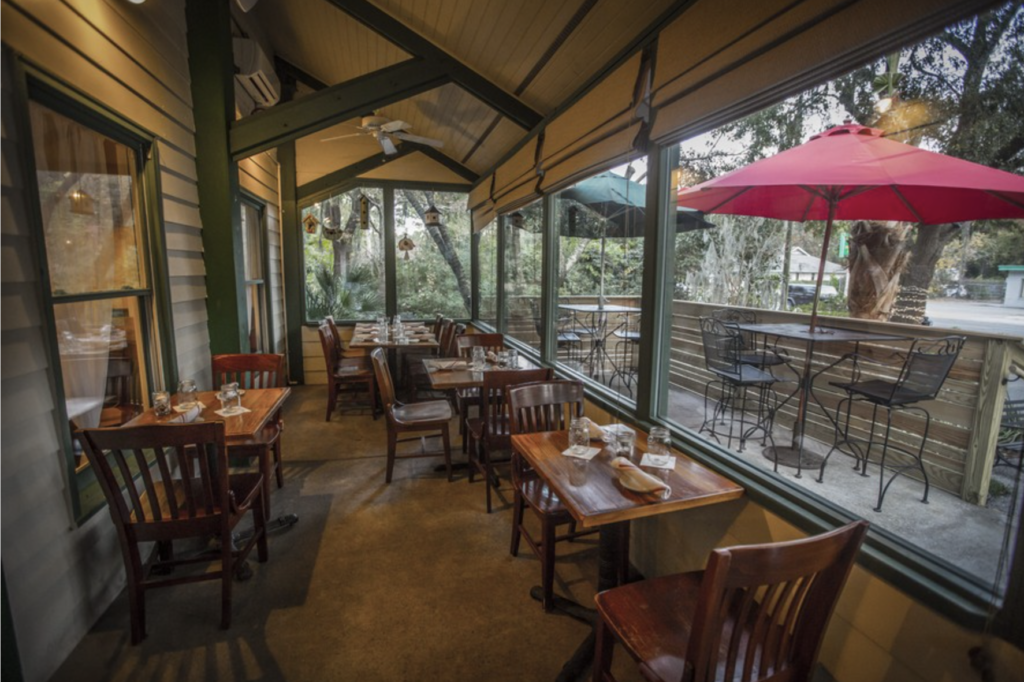
Sources:
- Parker Milner. “C’est la vie.” April 2021. https://www.charlestoncitypaper.com/story/37-years-in-fast-french-isnt-going-anywhere?fbclid=IwAR2MrynS6f9CY3Vg0rNkM3-nVMvQN3M7YLg6AksFKTcHplNSBsbwL557tyQ
- Stephanie Burt. “Maison Review.” Conde Naste. https://www.cntraveler.com/restaurants/charleston/maison
- https://www.holycityhospitality.com/39-rue-de-jean-charleston/
- https://www.cheznouschs.com
- Olivia Rae James. “Chez Nous.” Bon Appetit. https://www.bonappetit.com/city-guides/charleston/venue/chez-nous
- http://www.bistrotoulouse.com
- https://anniesbistrofrancais.wordpress.com/blog/
- https://www.baguettemagic.com
- https://thefathen.com
- Theresa Taylor. “Decades of Dining: Charleston menus from past reflect changing palates, but love of seafood remains a constant.” October 2011. Post and Courier.
- Butler, Christina. “America’s Oldest Vieux Carre.” Charleston Empire Properties. https://charlestonempireproperties.com/americas-oldest-vieux-carre-charlestons-french-quarter/
- National Register nomination, “French Quarter and Lodge Alley”, 1973.
- Nicholas Butler. “Myth of the Holy City.” Charleston Time Machine. https://www.ccpl.org/charleston-time-machine/myth-holy-city
- Nicholas Butler. “Freedom Won and Lost.” Charleston Time Machine. https://www.ccpl.org/charleston-time-machine/freedom-won-and-lost-story-catherine-antebellum-charleston-part-1
- Anne Byrn. American Cake: From Colonial Gingerbread to Classic Layers. Rodale, 2016.
- Teresa Taylor. “Soup stirs memories of Marianne’s.” 30 January 2010. Post and Courier.
- Teresa Taylor and Suzannah Smith Miles. “Deja Food.” February 2019. Charleston Magazine.
- Historic newspaper articles

